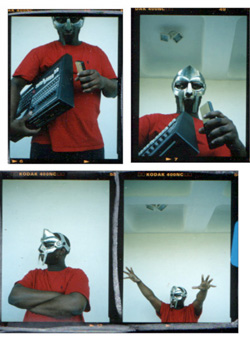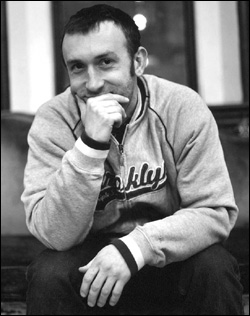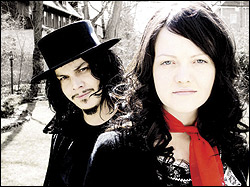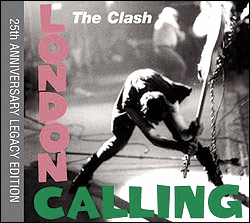Internal document leaked from the United States Bureau of Aesthetic Security
NAME: MF Doom
REAL NAME: Daniel Dumile
ALIASES: Zevlove X, Metal Face, Metal Fingers, King Geedorah, Viktor Vaughn, unknown others
OCCUPATION: Underground hip-hop (“rap”) MC; producer
DATE OF BIRTH: Unknown; presumed late 1960s
PLACE OF BIRTH: London, England (NOTE: Look into potential deportation action if needed; tread carefully, as our previous attempt to deport a London-born MC from the U.S.A.—OPERATION: MONA LISA—was an unmitigated disaster)
CURRENT RESIDENCE: Unknown; recent leads point to Atlanta
GROUP AFFILIATIONS: KMD (1989–93); Monsta Island Czars (1999–present); Madvillain (2004–present)
KNOWN COLLABORATORS: MF Grimm, the Herbaliser, Prefuse 73, Non Phixion, RJD2, Madlib, unknown others (research needed into possible MC Paul Barman connection; this could bring Doom down a notch if proved)
FIRST APPEARANCE: 3rd Bass, “The Gas Face” (1989)
It has recently come to our attention that the MC known as “MF DOOM” has resurfaced to resume his sabotaging efforts against rap normalcy (see notes below on “MADVILLAINY” project). Study this dossier closely, as it may prove to be vital in deducing the exact motives and M.O. of the subject in order for us to track and possibly prevent further hazardous activities. We suggest that action be taken as soon as possible; an upcoming Cam’ron album is set to be released in June, and we lack the resources to wage a double-pronged war against such lyrical abnormality on a simultaneous underground/mainstream front.
BACKGROUND: A veteran of the late-1980s “conscious rap” movement, Doom (then known as “ZEVLOVE X”) began his career as part of KMD, a group formed with younger brother DJ Subroc and fellow MC Onyx (not to be confused with subjects of 1993 probe OPERATION: GRAND SLAM). KMD’s 1991 debut, Mr. Hood, was generally praised by various subversive elements for its combination of Afrocentric politics, abstract rhymes, and jazz-styled beats; it was also a sinister attempt to brainwash American children via seemingly innocent usage of popular Sesame Street characters Bert and Ernie (see 1969 probe OPERATION: PIGEON). As work commenced on a potential follow-up, Subroc was struck by a car and killed, his final contributions to the group gathered in a collection of beats that would be used for the next record. Black Bastards featured rhymes that were more politically incendiary than previous, and our operatives in Elektra were quick to shelve the album, citing “controversial cover art” (a Sambo-esque cartoon character being hung from a gallows). Shortly thereafter, KMD were dropped from the label’s roster, and Zevlove X disappeared from the public eye, swearing revenge before vanishing underground. What appeared to be the silencing of a potentially contentious figure, however, would later prove to be the catalyst for a dangerous evolution into the public hazard known today as MF Doom.
UNLAWFUL ACTIVITY: After resurfacing in 1998, hiding his once-known visage behind a metal mask as a freestyle performer at the Nuyorican Poets Cafe, Doom conspired with Bobbito Garcia (legendary radio DJ and head of Fondle ‘Em records) to bring OPERATION: DOOMSDAY to fruition. The operation’s mission: to divert attention from workaday indie-rap MCs and indoctrinate rap- listening citizens into an ideology that accepts non sequitur pop-culture references and reconstructed ’80s R&B as a superior form of hip-hop. The resulting album, also and impertinently titled Operation: Doomsday, was a minor-scale salvo meant more as a reassertion into the hip-hop arena than a full-fledged onslaught, but the efficiency with which the plan was carried out— using little else than a VCR for cartoon sample sources and a modified, deeper, more deadpan variation of Doom’s normal flow—was sufficient enough to cause shock waves through hip-hop’s underground.
Once attention was drawn to his efforts, his further operations were shrouded under aliases—acting as a communication vessel for giant radioactive space hydra monster King Geedorah; going incognito as street thug Viktor Vaughn—and activity was focused more on instrumental beats (referred to cryptically in three separate documents given two volume numbers each as “Special Herbs,” e.g. this year’s Special Herbs, Vols. 5–6). Sources indicated in summer 2003 that Doom was attempting to collaborate with notorious underground producer MADLIB, but leaked demos proved inconclusive and the collaboration was dismissed as a rumor; it was initially assumed by covert ops that a collaboration between two producer–MCs known for their alter egos would be a redundant clash of ideas.
This proved a fatal miscalculation: Madvillainy was released in March 2004 to widespread acclaim, and the combination of Madlib’s hard-bop hypnosis and Doom’s deeply coded threats to our cherished standard rhyme meters has already taken hold of an audience larger and newer than had been anticipated. Our cryptology department has worked overtime in efforts to decipher Doom’s lyrics, and their findings (“Should’ve let your trick ho chick hold your sick glow/Plus nobody couldn’t do nothin’ once he let the brick go”—”All Caps”; “Looky here, it’s just the way the cookie tear/Prepare to get hurt and mangled, like Kurt Angle rookie year”—”Great Day”) are evidence that his powers pose a clear and present danger to the vast majority of underground MCs in operation today. And while Madlib’s involvement in this project is helpful on a surface level as name recognition, his contributions to the album’s production are also insidiously well crafted, drawing out propulsive beats from previously concealed spaces beneath 1960s-grade materials.
Obviously, urgent action is necessary. I suggest we act swiftly; otherwise, the potential for Doom to unleash further havoc upon an unsuspecting populace will be astronomical. We must stifle this threat to our status quo. By the way: How is progress on that new Black Eyed Peas album going?
MF Doom plays the Showbox with Talib Kweli at 8 p.m. Thurs., May 27. $20 adv.








